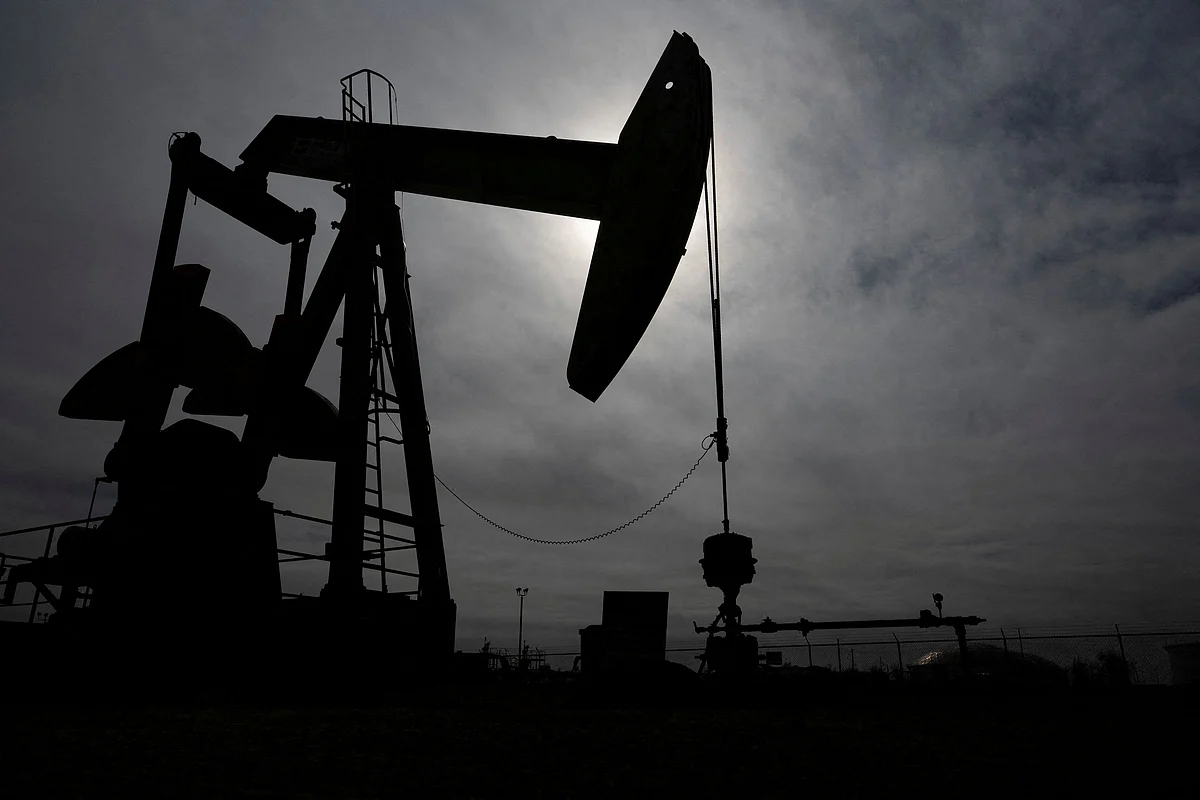Doha Strike, New EU Tariff Threat Rattle Oil Market
Global oil markets are once again navigating turbulent waters, with geopolitical shocks from the Middle East and fresh trade maneuvering by Washington combining to keep traders on edge.
On Wednesday, crude prices rose modestly after reports of an Israeli strike on Hamas leaders in Doha, and confirmation that US President Donald Trump had urged the European Union to impose a 100 per cent tariff on China and India to curb their purchases of Russian crude.
Recommended For YouAt midday trading, Brent crude hovered at $67.09 per barrel and West Texas Intermediate (WTI) at $63.32, both slightly higher than Tuesday's close. The gains, however, were modest - under 1 per cent - underlining that while geopolitical risk premiums are back in play, fundamentals remain weak. Earlier in the session, both benchmarks spiked nearly 2 per cent before retreating after Washington assured Doha that no further Israeli strikes would occur on its soil.
The attack in Doha immediately reverberated across the region, threatening to derail fragile ceasefire talks between Israel and Hamas mediated by Qatar.“Any escalation involving Qatar - a key mediator and LNG powerhouse - injects uncertainty into the market. But the muted reaction shows traders are unconvinced about sustained supply disruptions,” said Amrita Sen, chief oil analyst at Energy Aspects.
For much of this year, geopolitical flashpoints from Ukraine to the Red Sea have failed to translate into lasting price gains. The underlying drag has been persistent concerns about global demand growth, with the US Energy Information Administration warning this week that rising inventories and Opec+ output increases will cap prices in the months ahead.
Tony Sycamore, analyst at IG Markets, said the market's muted response reflects“skepticism that isolated strikes will translate into long-term supply disruptions, especially when demand signals remain weak.”
Overlaying the Middle East tensions is President Trump's latest push to weaponise trade policy in the energy war with Russia. According to sources cited by the Financial Times, Trump has asked the EU to impose tariffs of 100 per cent on crude imports by China and India, the two largest buyers of discounted Russian oil since 2022.
The move, if enacted, would mark a dramatic shift from sanctions to secondary tariffs, targeting Russia's biggest remaining revenue lifeline. Analysts warn, however, that such a step could trigger a host of unintended consequences.
“Expanding secondary tariffs to include China would be seismic. It could disrupt Russian flows, squeeze supply, and push prices higher. But it risks destabilising EU-China trade and could backfire economically,” said Vandana Hari, founder of Vanda Insights.
EU officials are reportedly wary. China is the bloc's second-largest trading partner after the US, making tariffs a politically fraught proposition. India, meanwhile, has deepened its energy ties with Moscow, importing record volumes of Russian crude.
For Washington, the strategy carries its own contradictions. Higher oil prices, while hurting Russia, would also fuel inflationary pressures in the US and complicate the Federal Reserve's expected pivot to rate cuts.“Aggressive tariffs would tighten supply but clash with Trump's political imperative to lower inflation before the 2026 campaign cycle gains pace,” noted LSEG analysts in a report quoted by Reuters.
In the short term, traders expect volatility to remain elevated as headlines from both Doha and Brussels filter into pricing. A weaker dollar, should the Fed cut rates as anticipated next week, could also lend support to crude by making commodities cheaper for holders of other currencies.
But the medium-term outlook remains capped by oversupply risks. Opec+ has begun gradually raising output, while US shale producers continue to maintain robust production levels. The International Energy Agency has forecast that global oil demand growth will slow sharply into 2026, a trend reinforced by weaker-than-expected Chinese consumption data.
“Absent a major and prolonged disruption, oil remains vulnerable to the downside. Structural demand weakness outweighs short-term geopolitical rallies,” said Helima Croft, head of commodity strategy at RBC Capital Markets.
Energy market experts argue that she latest developments highlight the increasingly complex intersection of geopolitics, trade policy, and energy security.“For oil markets, it is not just supply shocks but the political tools used - from sanctions to tariffs - that are shaping price expectations.”
For now, oil traders are treading carefully, balancing the bullish implications of tighter supply against the bearish weight of slowing demand, they said.
The Israeli strike in Doha may prove to be a flashpoint without lasting supply impact, but it underscores the fragility of Gulf diplomacy and the potential risks to Qatar's pivotal role in global LNG markets. Trump's tariff gambit, meanwhile, could escalate into a broader trade confrontation with China and India, reshaping global crude flows in ways difficult to predict.

Legal Disclaimer:
MENAFN provides the
information “as is” without warranty of any kind. We do not accept
any responsibility or liability for the accuracy, content, images,
videos, licenses, completeness, legality, or reliability of the information
contained in this article. If you have any complaints or copyright
issues related to this article, kindly contact the provider above.
Most popular stories
Market Research

- Bitmex And Tradingview Announce Trading Campaign, Offering 100,000 USDT In Rewards And More
- TOKEN2049 Singapore Breaks Records: 25,000 Attendees At The World's Largest Web3 Event
- Daytrading Publishes New Study On The Dangers Of AI Tools Used By Traders
- Next Generation Management Corp. (OTC: NGMC) Announces Strategic Shift Toward Digital Commerce Acquisitions
- What Is The Growth Rate Of The Europe Baby Food And Infant Formula Market In 2025?
- What Does The Europe Cryptocurrency Market Report Reveal For 2025?





















Comments
No comment